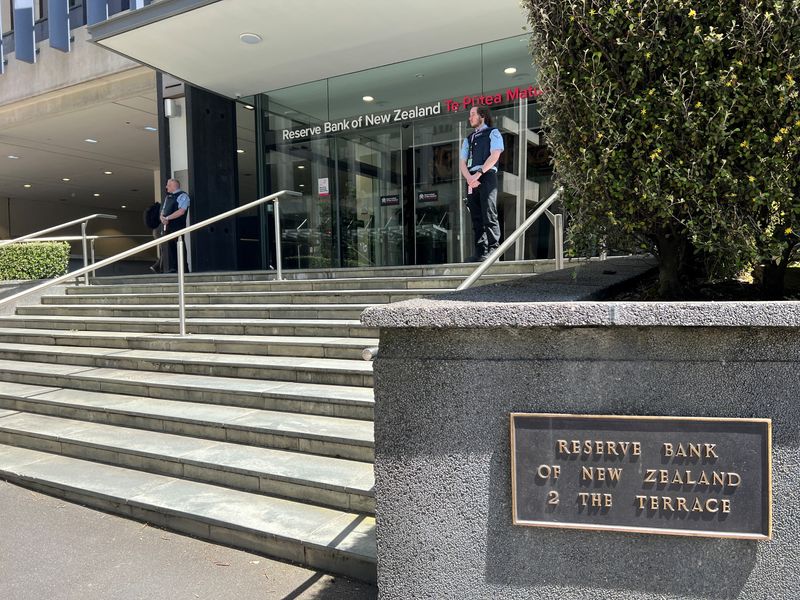
© Reuters. View of an entrance to the Reserve Bank of New Zealand in Wellington, New Zealand November 10, 2022. REUTERS/Lucy Craymer
LCO
-0.31%
Add to/Remove from Watchlist
Add to Watchlist
Add Position
Position added successfully to:
Please name your holdings portfolio
Type:
BUY
SELL
Date:
Amount:
Price
Point Value:
Leverage:
1:1
1:10
1:25
1:50
1:100
1:200
1:400
1:500
1:1000
Commission:
Create New Watchlist
Create
Create a new holdings portfolio
Add
Create
+ Add another position
Close
By Jamie McGeever
(Reuters) – A look at the day ahead in Asian markets.
The Reserve Bank of New Zealand, sometimes seen as global monetary policy’s “canary in the coal mine,” takes center stage in the Asia and Pacific region on Wednesday when it delivers its latest interest rate decision.
Australia’s January inflation data are also on tap – annual inflation is expected to accelerate to 3.6% from 3.4% – and markets across the region should be relatively calm at the open after a quiet global session on Tuesday.
U.S. Treasury yields inched up slightly on Tuesday after the bond market absorbed a $42 billion auction of seven-year paper without much trouble. This was a day after $127 billion worth of two- and five-year bonds were sold, and the relative ease with which these sales passed is encouraging for investors.
The dollar flat-lined, the yen’s rise on the back of surprisingly sticky Japanese inflation was minimal, Wall Street was mixed but within narrow ranges, and global and Asian stocks edged up a bit.
All in all, a quiet session on Tuesday that is unlikely to give much direction for Asia on Wednesday, which means even more attention falls on the RBNZ’s rate decision.
All but one of the 28 economists polled by Reuters expect the RBNZ to keep its cash rate at a 15-year high of 5.50%, with the outlier at ANZ going for a 25 basis point hike.
That’s clearly a non-consensus call, but perhaps not all that outlandish. The swaps market is attaching around a 23% probability of a hike on Wednesday, and a near 50-50 likelihood of an increase by May.
Inflation at 4.7% remains well above the central bank’s target range of 1-3%. RBNZ Governor Adrian Orr said recently that the inflation challenge was not over, and the central bank’s aim was to continue to slow it to around 2%.
That 2% goal pursued by many major central banks today was invented in New Zealand in the late 1980s. With inflation running high at the time, the then finance minister plucked the 2% figure out of the air and a couple of years later New Zealand became the first country to formally have an inflation-targeting goal.
Fast forward to today, and the RBNZ is in the same boat as many other central banks, facing sticky inflation, a strong labor market, weak growth, high mortgage rates, and a vulnerable consumer.
Unlike the U.S. Fed, however, the RBNZ no longer has a dual mandate – its sole target is inflation. Will it surprise markets with a hike? Possibly, but as Brent Donnelly at Spectra Markets notes, since 2000 the RBNZ has never raised the cash rate when it has been above the two-year swap rate.
Here are key developments that could provide more direction to markets on Wednesday:
– New Zealand interest rate decision
– Australia inflation (January)
– Hong Kong GDP (Q4, final)
(By Jamie McGeever)
Source: Investing.com





























